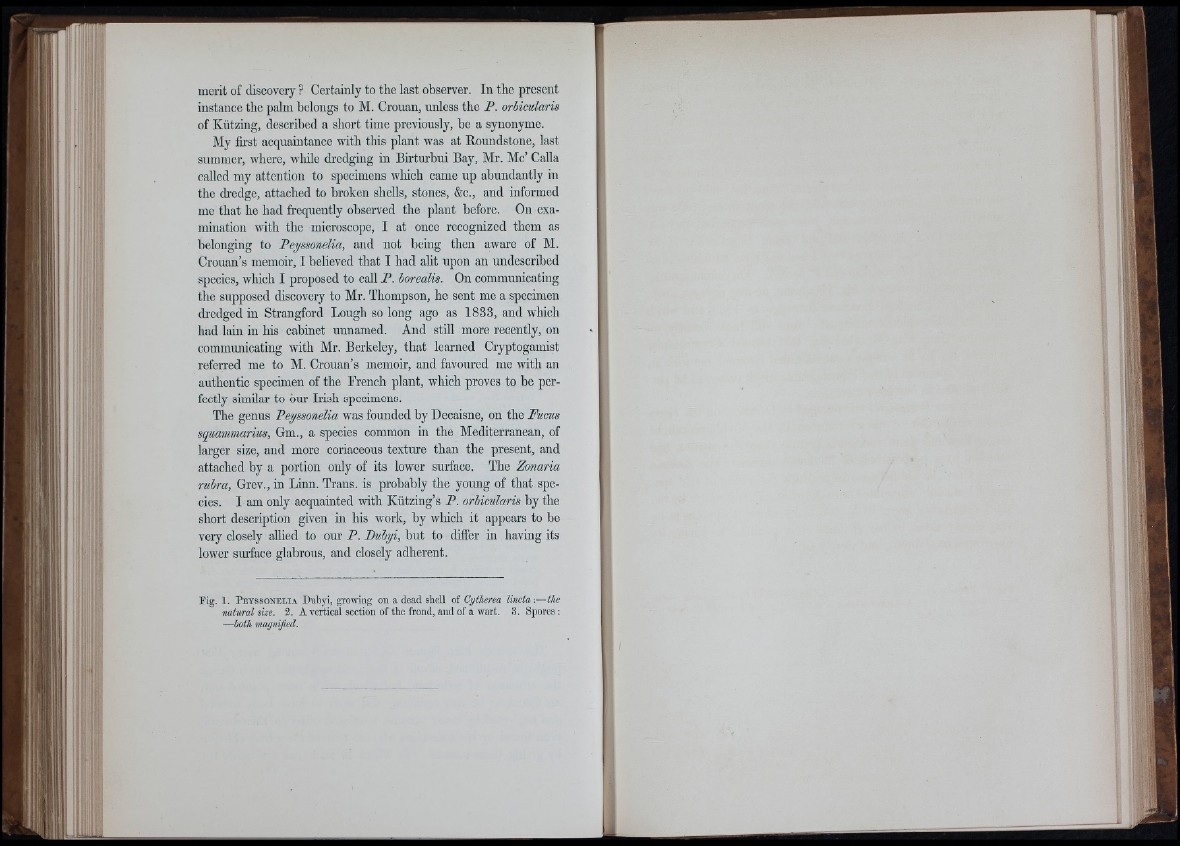
merit of discovery ? Certainly to the last observer. In the present
instance the palm belongs to M. Crouan, unless the P. orbicularis
of Kützing, described a short time previously, be a synonyme.
My first acquaintance with this plant was at Roundstone, last
summer, where, while dredging in Birturbui Bay, Mr. Me’ Calla
called my attention to specimens which came up abundantly in
the ch’cdge, attached to broken shells, stones, &c., and informed
me that he had frequently observed the plant before. On examination
with the microscope, I at once recognized them as
belonging to Peyssonelia, and not being then aware of M.
Crouan’s memoir, I believed that I bad alit upon an undescribcd
species, which I proposed to call P. borealis. On communicating
the supposed discovery to Mr. Thompson, he sent me a specimen
dredged in Strangford Lough so long ago as 1833, and which
had lain in his cabinet unnamed. And still more recently, on
communicating with Mr. Berkeley, that learned Cryptogamist
referred me to M. Crouan’s memoir, and favoured me with an
authentic specimen of the French plant, which proves to be perfectly
similar to our Irish specimens.
The genus Peyssonelia was founded by Decaisne, on the Pucus
squammarius, Gm., a species common in the Mediterranean, of
larger size, and more coriaceous texture than the present, and
attached by a portion only of its lower surface. The Zonaria
rubra, Grev., in Linn. Trans, is probably the young of that species.
I am only acquainted with Kützing’s P. orbicularis by the
short description given in his work, by which it appears to be
very closely allied to our P. Pubyi, but to differ in having its
lower sm-face glabrous, and closely adherent.
i l
¡ D
m
Fig. 1 . P e y s s o n e l i a Dubyi, growing on a dead shell of Cyfherea Uncta-.— the
natural size. 2. A vertical section of the frond, aud of a wart. 3. Spores ;
— hath magnified.
fi;